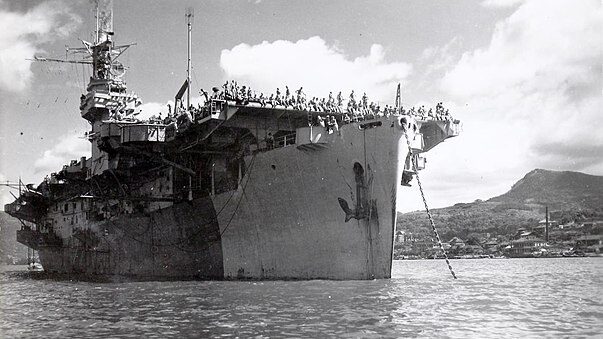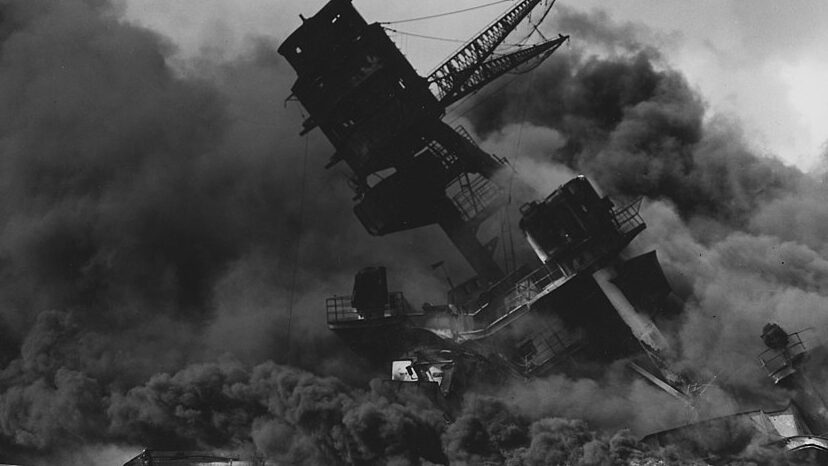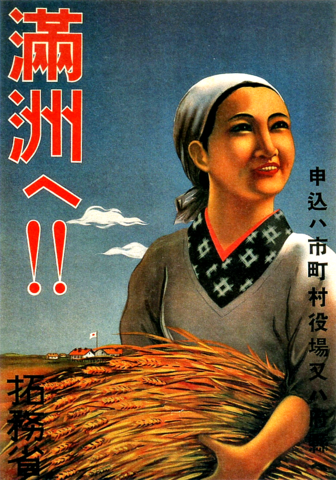This month in 1941, Japan launched a multi-front attack across the Pacific changing the course of the war, and the world for decades to come. On Christmas Day Hong Kong fell to the Japanese. The roots of Japanese militarism can be traced in part to endemic racial prejudice and inequity between the western powers and Asia. Within just a generation, Japanese militarism took hold and led the world to tragedy. 80 years later the lessons of diversity, equity, and inclusion lessons are now as important as ever.
Beginning with a surprise attack on the American Pacific fleet based at Pearl Harbor, Hawaii, on 7 December, the Japanese launched simultaneous attacks targeting Malaya, Thailand, Hong Kong, and the Philippines. Japan had annexed Manchuria after the Mukden Incident of 1931, had withdrawn from the League of Nations, and was already at war with China since 1937. 4 years later, after the dropping of 2 atomic bombs, Japan was in ruins, and tens of millions had been killed across Asia.
The Japanese attack would be a pivotal moment in the history of the 20th century. It brought America into the war against the Axis powers and heralded the beginning of an era of Pax Americana. While ruined in 1945, Japan would re-emerge as a global economic leader. The closing of one war would see the beginning of a number of anti-colonial wars of independence, and the eventual expulsion of colonial powers across Asia. Japan had been a treaty partner of Britain, and in the First World War would ally with the British and Americans. Between the wars, Japan became one of the leading trading partners with the United States. So why did the Japanese become the aggressor in the 1930s and eventually strike out at the US and other allied powers? In a world today in turmoil with renewed nationalism, it is important to remember that much of the Japanese militarism of the 1930s is rooted in the lack of diversity and inclusion on the world stage in the 1920s. While I cannot condone the actions of the Japanese, it is important to understand their motivations to learn the lessons of history.
I really only started my own journey to understand the roots of the Pacific War when I came to Asia in 1995. Both of my grandfathers had fought in the European theatre, so the war in Asia was never part of the narrative. One grandfather has passed through Japan in the early 1950s on his way to the war raging on the Korean Peninsula, and his memories of his sojourn in Japan were positive. A great uncle in the family had been taken prisoner in Singapore in 1942 and after forced labor in Malaya and Thailand, had been shipped in horrifying conditions to Japan. Many of those transport ships were mistakenly the targets of Allied dive-bombers and torpedoes and many prisoners of war lost their lives in transit. That great uncle was interned in Nagasaki and witnessed the second atomic bomb on 9 August 1945, from Camp No. 25. While so many have shown forgiveness, I believe he never forgave his captors.

In the summer of 1996, I was on one of my first solo trips outside Japan into Asia – Hong Kong. It was still one year before the return of the British-dependent territory to China. After several days of the hustle and bustle of Kowloon and Hong Kong Island, I was looking for some peace and quiet, and a history lesson. I took the MTR out to its last station. I dodged water droplets from airconditioning units as I exited the Wai Chan station and found my bus. It was a mini-bus – number 9. Enduring stares from other passengers who must have thought me lost, I made my way up the hillside and got off at the stop indicated by the driver. The Sai Wan Cemetary was a haven from the noisy, crowded streets of Hong Kong, and I was interested in the history behind the 1492 gravestones. The cemetery looked out over the city, but the views of the harbor and Kowloon were now obscured by the rising apartments of Wai Chan.
The Canadian Virtual War Memorial provides a digital place to remember the sacrifices of men and women like Lance Corporal Adams. You can find his entry here. The Hong Kong Veterans Commerative Association educates others about the role of Canadian soldiers in Hong Kong and the aftermath of the battle. Carl Maxwell Adams' information can be found here.
I spent several quiet hours walking amongst the headstones, reading the stories of those buried there. I took the photograph above of one of those 1492 graves. Only recently was I able to fully learn the story of the man buried there. Lance Corporal Bryce Adams of the Royal Rifles of Canada was just 18 when he died of wounds 80 years ago on Christmas Day, 1941. He lies beside 283 other Canadian soldiers. His brother, Carl Maxwell Adams was also in Hong Kong with the same unit, was captured, and spent nearly 4 years as a prisoner of war of the Japanese. After some time interned in Hong Kong, he, like my great uncle, would be transported to Japan as forced labor first in Yokohama for shipbuilding and then coal mining near Sendai.
On the same Christmas Day 1941 that Lance Corporal Adams succumbed to his wounds, the outnumbered Allied forces in Hong Kong, which included British, Indian, and two Canadian infantry battalions just recently arrived to reinforce the garrison, were overrun in their last strongholds on Hong Kong Island and surrendered. In Hong Kong, it is still remembered as the Black Christmas. Atrocities were committed and the city came under the brutal rule of the Japanese during a near 4-year occupation, only ending with the surrender of the Japanese in August 1945.

I remember being moved by the afternoon I spent at the Sai Wan Cemetary. I would see similar sights and hear similar stories on a number of trips across Asia. In 2019, on vacation to Hawaii, my Dad and I spent several hours in Pearl Harbor. We started the tour with the museum which describes the road to war and Hawaii in 1941, followed by a short boat ride to the USS Arizona Memorial. That too was a moving experience. We followed the USS Arizona Memorial with a tour of the USS Missouri, from whose deck you can survey Pearl Harbour, and upon whose deck the final articles of surrender by Japan were signed in 1945. Throughout these journeys and experiences, I have tried to imagine the Japan that I know and love becoming so militant to launch such an attack and dominate East Asia for nearly 10 years of brutal war.
The Japanese Imperial Army did horrible things to not only Allied prisoners of war but also the civilian population, some of the notorious being the Rape of Nanjing in 1937 and the system of comfort women. After 26 years in Japan and I still wonder how an entire nation could pivot within just one generation. My wife’s grandfather was a teacher in the 1940s and so was spared the draft and deployment. We never discussed it but he would have been part of the infrastructure radicalizing and preparing young Japanese for war. His brother was not as lucky, never returning, his body never recovered from a Pacific island. While I considered the importance of cross-cultural communication and relationships, I started to research the era of increased militarism in the late 1920s and 1930s to understand some of the root causes of the war. While it is impossible to condone the militarism and atrocities of that era, a growing sense of isolationism stemming from a need for resources led to militant desperation. At the same time that isolationism was fueled by the anti-Asian sentiment of the western powers throughout the 1920s and 1930s. Diversity, equity, and inclusion are popular themes for today’s companies and organizations. The lack of equity and inclusion at a transnational level helped fuel the militarism that led to war. As we think about our geopolitical and economic situation 80 years later, what lessons can be learned?
Treaty of Versailles – A Failure for Racial Equality
In 1919 the great powers gathered in Versailles to draft a treaty to bring a formal end to the First World War and to address many of the root causes. Woodrow Wilson, the American president, the lead negotiator, had outlined “self-determination” as a key principle for the future of nations. The Japanese were to propose even stronger language to eliminate racial inequality, but it was rejected in the final treaty.
Japan had been closed for more than 200 years to western powers and intervention until Commodore Perry of the United States in an example of gunboat diplomacy sailed into Tokyo Bay in 1853. Following Perry’s arrival, and the imposition of several unequal treaties, Japan went through an internal revolution with the restoration of the Emperor and the establishment of a new form of governance. Too many examples across Asia demonstrated the painful implications of unequal treaties and also outright colonialism. They embarked on a concerted effort to learn from the industrial and military might of Europe and the United States, followed by victory first over China in 1895 leading to the annexation of Taiwan. Japan’s second victory in 1905 over a European power, Russia, shocked traditional understanding that European powers were more powerful than Asians, and gave hope to a number of independence leaders across the British Empire and other colonies of Europe. Encouraged by its victories, a need for resources, and a model of European colonialism, Japan started down its own dark path of colonialism with its annexation of Korea in 1910.

When the Japanese delegation arrived at the Paris Peace talks in 1919 they arrived as members of the victorious side. Entering the war on the side of the Allies in August 1914, Japan contributed over 50,000 troops in China to seize territory from Germany, which would eventually lead to postwar controversy. They seized German territory in Micronesia, which the Treaty of Versailles later ceded in part to Japan. This led both Australia and New Zealand to worry about Japanese naval supremacy and influence in the Pacific, and they were awarded other German holdings in the same region. Japan came to negotiate as an equal party and was determined to see a slow down, if not reversal, of increasingly anti-Asian and anti-Japanese practices in the leading western powers. Japan’s actions in the Far East were less costly compared to the devastation of the war in Europe and the Middle East, so the European powers did not necessarily see Japan as an equal at the table. However, anti-Asian, and Japanese, attitudes by the white colonial powers, their dominions, and the United States long predate the First World War.
“The equality of nations being a basic principle of the League of Nations, the High Contracting Parties agree to accord as soon as possible to all alien nationals of states, members of the League, equal and just treatment in every respect making no distinction, either in law or in fact, on account of their race or nationality.”
Japanese Racial Equality Proposal, 1919
While many historians argue that the proposal was not intended to truly seek racial equality, it was supported by a number of other nations. Australia had a White Australia policy from the beginning of the century and was able to convince the remaining of the British delegation, with sovereignty over colonies including India, to oppose the proposal. President Wilson, in order to keep the British delegation supportive of the founding of the League of Nations, invented a unanimous rule for adopting Japan’s proposal, and so the proposition was finally rejected. Wilson had his own pressure from home to not allow the Japanese proposal for the same reasons of anti-immigration.
Anti-Japanese Immigration Laws – Escalating Prejudice
In addition to the White Australia policy of 1901, other western countries were focusing anti-immigration policy on Asia, and the Japanese. Japan’s increasing population and declining death rate, combined with a lack of resources within the island nation, saw emigration starting in the late nineteenth century. In 1907 the United States and Japan negotiated a gentleman’s agreement to restrict the number of immigrants to the US. In Canada, certain professions were barred for immigrant Japanese and large-scale anti-Asian riots rocked Vancouver in 1907. In 1913 California made it illegal for Asians to own property.
In 1924 the United States made Japanese immigration illegal, dealing another blow to racial equality and stoking the fires of young militants in Japan. A fledgling form of democracy in the 1920s, militant right-wing leaders, especially young military officers began emerging, sometimes leading to very violent ends for more moderate politicians. With a population problem on the home islands, Japan had to look elsewhere for settlement. Resource-rich Manchuria became the target, first through economic and financial means, and then full annexation following the staged Mukden Incident of 1931.

Washington Naval Treaty – Inequity between West and East
In February 1922 the Washington Naval Conference came to a close. Attended by the major powers. the intent was to prevent a post-war arms race. At the time the armament seen as most able to project a nation’s power was the battleship, with its guns being able to propel shells kilometers away. They were the intercontinental ballistic missiles (ICBM) of the era. In the aftermath of the First World War Britain continued to dominate the seas with an extensive global empire. The United States, while soon to enter a phase of isolationism, had become the dominant world power with its 1917 entry into the war.
The Washington Naval Conference, and its resulting treaty, set limitations on the amount of tonnage and the number of ships of different classes. At the conclusion of the conference, the United States and Britain were able to maintain fleets at a ratio of 5 to 5, but the treaty capped Japan’s ratio to 3. Seeing itself as a world power Japan was stung by the imbalance. Like the failure to include racial equality in the Treaty of Versailles, and the growing anti-Japanese immigration policies, racial prejudice was seen as the root cause for the failure to treat Japan’s navy on par with those of the US and Britain.

The restrictions contributed directly to the bold tactical plan to attack Pearl Harbor in 1941. No limitations were placed on a new form of ship, the aircraft carrier. In the 1920s and 1930s Japan focused on the development of aircraft carriers as a new form of projecting power. The aircraft carrier Akagi, one of six carriers to participate in the Pearl Harbor attack was originally commissioned in the 1920s as a battleship. Admiral Yamamoto, the mastermind behind the plan, was fundamentally opposed to war with the United States. He developed the attack plan leveraging this new technology in the hope to strike such a blow to the United States that they would come to the peace table, saving Japan from what he saw as inevitable defeat.
Learning from History
None of these racially motivated threats to Japan can excuse its aggression in the 1930s and 1940s, and the brutality it showed to both Allied prisoners of war and occupied people. However, it is important to learn the lessons of the interwar period and the fundamental lack of diversity, equity, and inclusion in geopolitics.
Japan was already on a dark path of colonialism with the cession of Taiwan by China, and the annexation of Korea, using European powers as a model. In the 1920s the politics of Japan were arguably more liberal than at any time since the Meiji Restoration in 1868. The racial blows of the rejection of Japan’s racial equality proposal in the Treaty of Versailles, escalating anti-Japanese immigration policies, and the unequal treatment of Japan by the other western world powers made Japan feel slowly backed into a corner. They also gave ammunition for the propaganda of emerging militant factions in the late 1920s and 1930s, who eventually lead the country to war.
It is not lost on me that my first direct experience with the memories of the war was in Hong Kong, one year before its return to China. Circumstances may be different than the 1920s and 1930s but the key tenants of diversity and equality are important. Trade wars and other policies can easily lead to hot wars if we don’t consider their implications.





